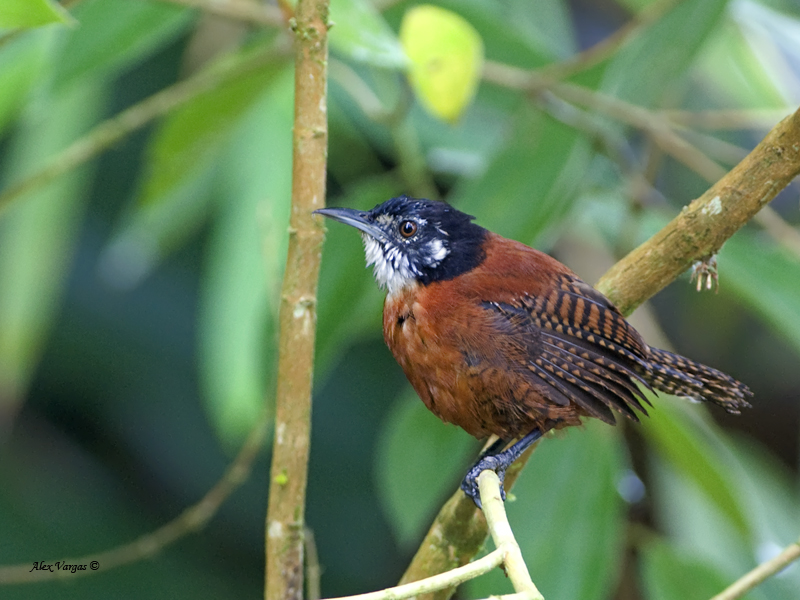
Thryothorus nigricapillus
TAXONOMY
Thryothorus nigricapillus Sclater, 1860, Nanegal, Pichincha,
Ecuador.
OTHER COMMON NAMES
French: Troglodyte б tкte noir; German: Kastanienzaunkцnig;
Spanish: Cucarachero Cabecinegro, (Panama) El Guerrero.
PHYSICAL CHARACTERISTICS
5.8 in (14.5 cm). 0.78 oz (21.9 g). Strikingly marked, with
black head, white facial markings, chestnut back, and heavily
barred wings and tail. Central American populations have a
white throat and unbarred chestnut belly; the South American
races are heavily barred with black from the upper chest to the
lower flanks. Eyes are brown; bill is blackish with pale orangeyellow
base; legs are blackish. Sexes are similar. Juveniles have
less clear-cut facial markings, and colors are generally somewhat
less rich.
DISTRIBUTION
Caribbean slope of Central America from central Nicaragua
and Costa Rica to Panama; both drainages from central
Panama to Colombia, western Colombia along Pacific slope to
southern Ecuador.
HABITAT
Edges of humid forest, generally absent from forest interior;
Heliconia thickets. Occurs from sea level to 3,600 ft (1,100 m).
BEHAVIOR
Found in pairs, low in thick vegetation; rather secretive. It is
territorial throughout year; both sexes sing and defend territory.
Song is a series of varied, loud, ringing whistles. Males
may sing on their own, but antiphonal song with female is frequent.
The female always initiates a song duet.
FEEDING ECOLOGY AND DIET
Food is entirely invertebrate, including spiders, beetles,
roaches, earwigs, etc.
REPRODUCTIVE BIOLOGY
Nest, built by both sexes, is an elbow-shaped construction
made of grass and vine tendrils, placed in vines or crotches of
shrubs at heights of 3–16 ft (1–5 m). Eggs number three and
are white with cinnamon speckles. Incubation and fledging periods
are not recorded. Breeding season protracted. In Panama
it occurs from February to November, in Colombia from January
to August.
CONSERVATION STATUS
Not threatened; substantial areas of habitat have been lost,
however.
SIGNIFICANCE TO HUMANS
None known.
Other popular Animals
Photo Gallery of - Bay wren
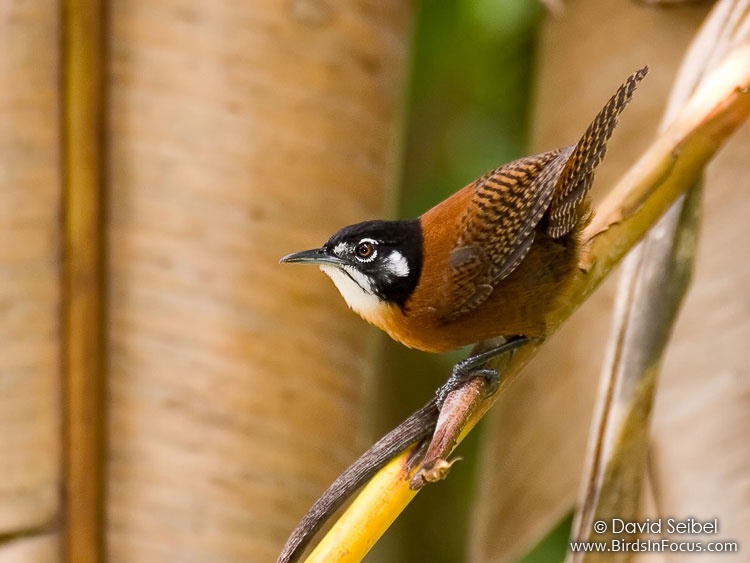
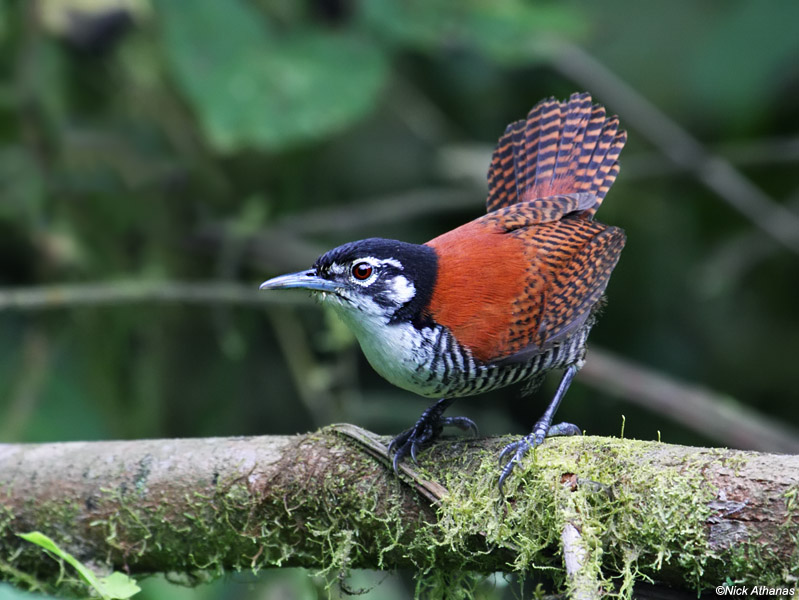
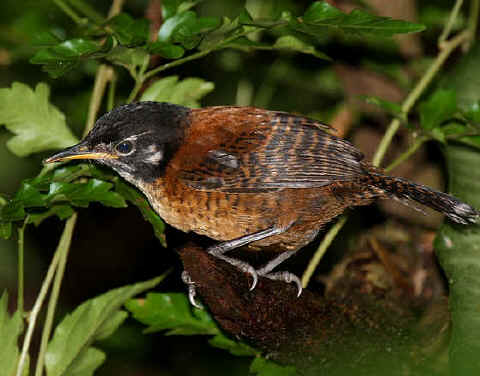
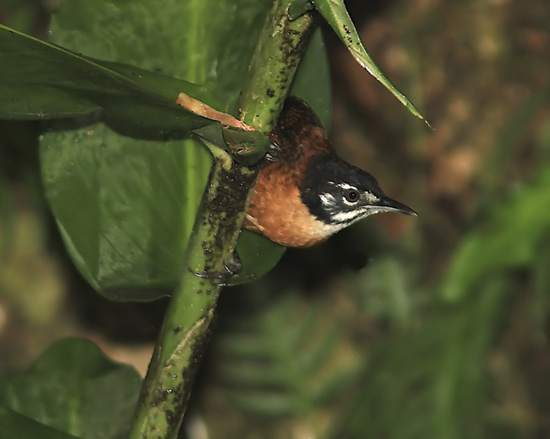
 Animalia Life
Animalia Life